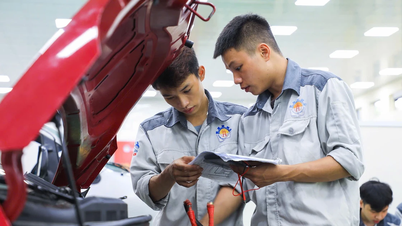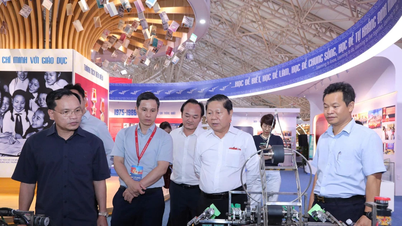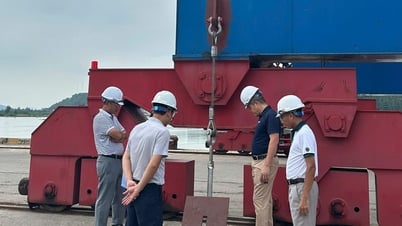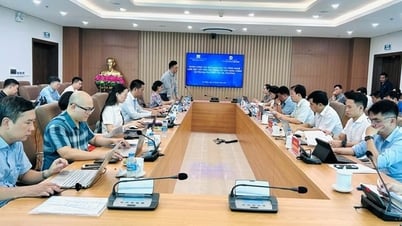Although the quality of university training is improving, the mismatch with business needs is still quite common, especially in the technology sector.
Mr. Do Thanh Binh - Director of International Cooperation of Vinasa said: Every year, we train about 50 thousand information technology students. However, of them, only 30% are ready to work immediately at the enterprise, the rest need to undergo additional training courses.
Information at the workshop on Forecasting model for training needs at university level in Engineering - Technology group to 2025, vision to 2030 in Vietnam showed that, at some Japanese companies, 100% of newly recruited graduate engineers must undergo 1 to 2 years of training to meet the requirements.
Shortening the gap between training and human resource use is the goal that many universities and colleges have set. Recently, many schools have made efforts to update their programs, helping students to adapt immediately to the labor market, instead of having to retrain in businesses.
The trend of reducing academic subjects and increasing specific skills in project management, Big Data, AI technology, cybersecurity, startups, etc. has been implemented. Some schools have even adjusted their programs, bringing students early access to business reality right from the first year, especially during the summer vacations.
Along with updating the program, many schools also proactively invite businesses to participate deeply in training, combining the implementation of flexible training models, in which many contents are trained right at the business.
In particular, with the policy that lecturers must be one step ahead, some schools have paid attention to training practical factors for teachers such as: sending lecturers to businesses to work in positions such as experts and consultants; requiring teachers to participate in scientific and technological activities in cooperation programs with businesses through presiding over research topics, ordering, participating in projects...
Private schools with more open mechanisms also proactively recruit lecturers who have worked and managed in multinational enterprises, and lecturers who have started businesses. Thanks to that, the practical experience of lecturers increases, creating value for lectures, thereby helping learners gain practical knowledge to apply when working.
However, most of the schools that do well in bridging the gap between training and employment are still mainly top schools with financial potential and many advantages in connecting with businesses. Most of the lower-ranking universities and local universities are still slow to respond to changes in the job market, especially in the technology sector.
The reason is that the technical infrastructure of schools is still fragmented, used independently, and lacks connectivity. Data infrastructure and connections are still scattered, isolated in each application, not shared, and there is no connection to share data. Shared digital resources are not fully completed and of good quality; investment resources for factories, information technology applications, digital transformation, etc. have not been properly invested.
In particular, there are still many gaps in the policy mechanism in school-enterprise cooperation, and businesses are not yet interested in connecting, so updating the needs of the labor market is quite difficult.
In order for training products to not fall behind in the job market, building strong connections between businesses and schools remains a fundamental factor. In addition to the efforts of schools, the State also needs to have appropriate investments, soon complete mechanisms and policies to create motivation for businesses to actively participate in the training process, contributing to shortening the gap between supply and demand.
Source: https://giaoducthoidai.vn/dao-tao-nhan-luc-nganh-cong-nghe-rut-ngan-khoang-cach-post739108.html



![[Photo] Hanoi: Authorities work hard to overcome the effects of heavy rain](https://vphoto.vietnam.vn/thumb/1200x675/vietnam/resource/IMAGE/2025/8/26/380f98ee36a34e62a9b7894b020112a8)


![[Photo] Multi-colored cultural space at the Exhibition "80 years of the journey of Independence - Freedom - Happiness"](https://vphoto.vietnam.vn/thumb/1200x675/vietnam/resource/IMAGE/2025/8/26/fe69de34803e4ac1bf88ce49813d95d8)




































































































Comment (0)